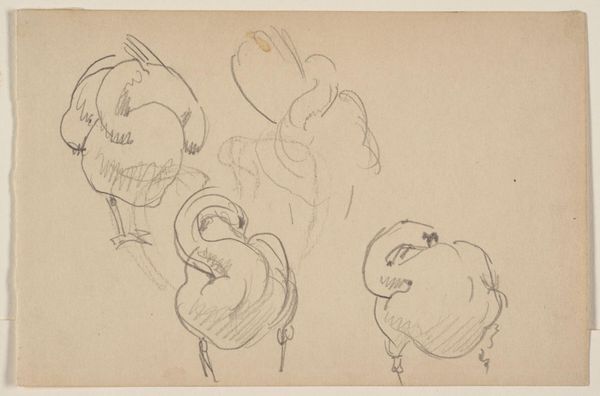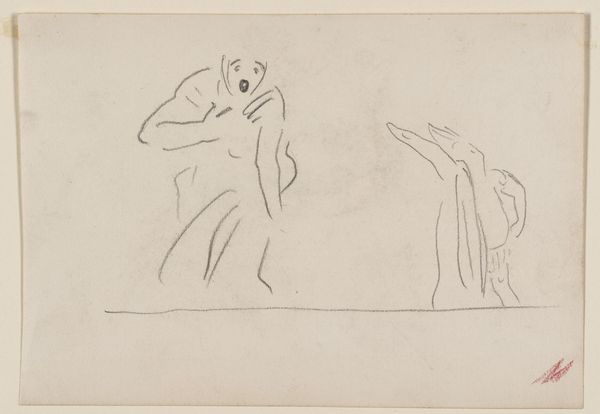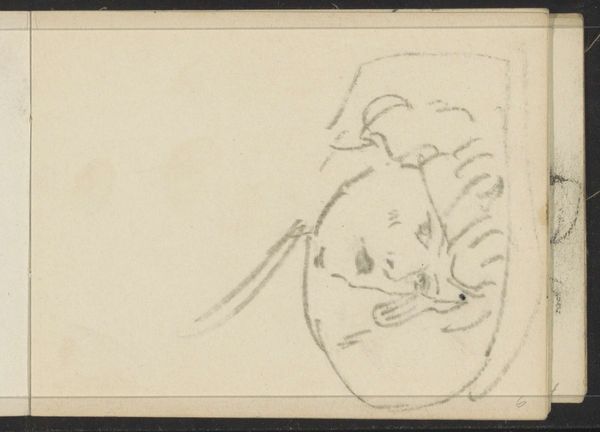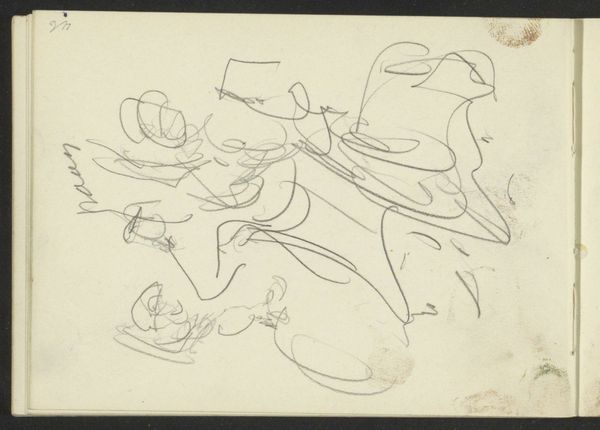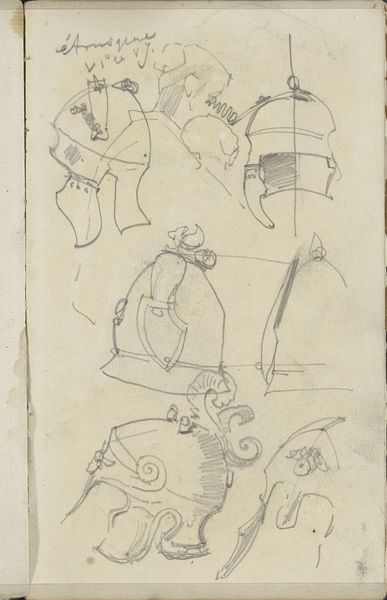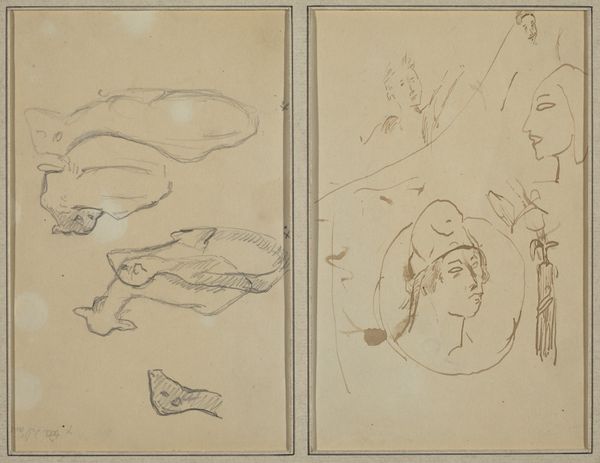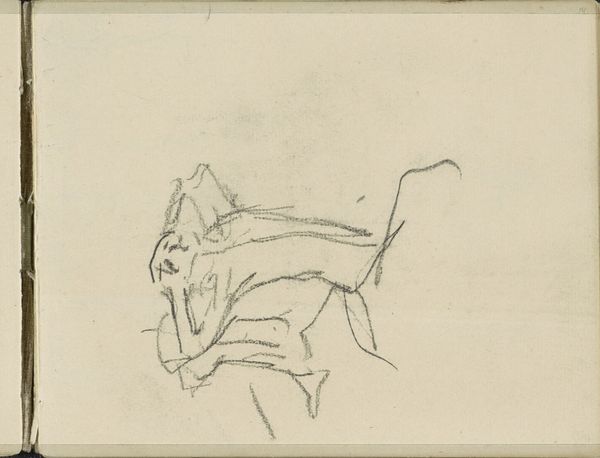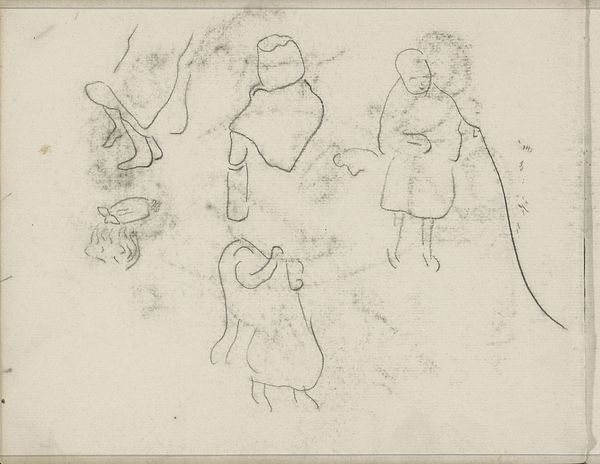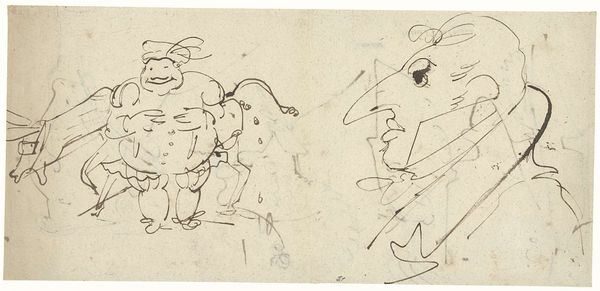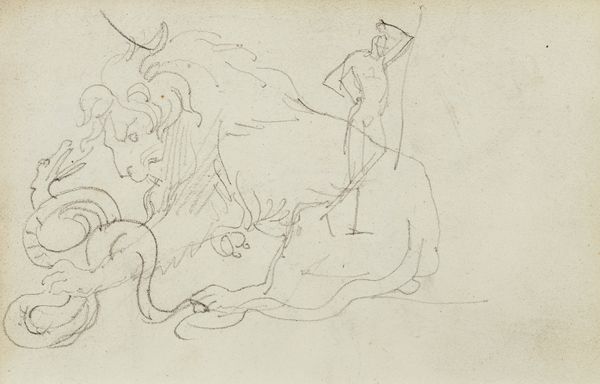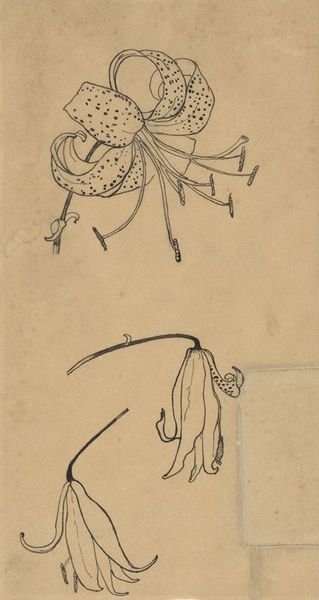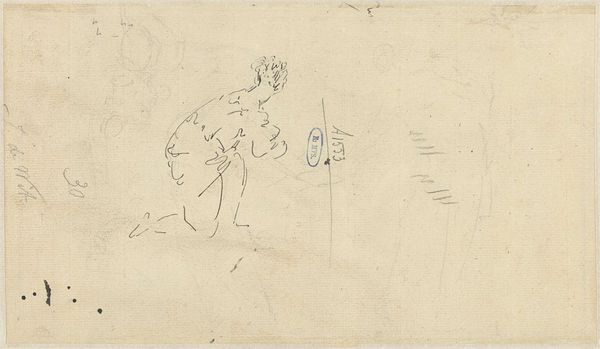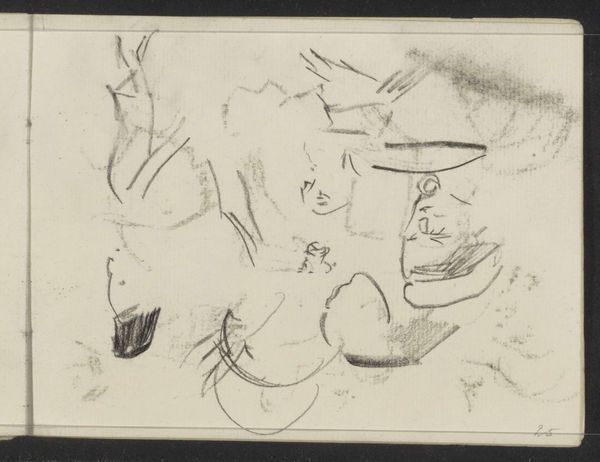
studie til damen med barnevognen fra siden til venstre på bladet; og til højre: en meget løs skitse (dame i storblomstret kjole?) 1923 - 1927
0:00
0:00
drawing, pencil
#
portrait
#
drawing
#
figuration
#
pencil
Dimensions: 224 mm (height) x 312 mm (width) (bladmaal)
Curator: This is a preparatory pencil drawing by Edvard Weie, dating from the period 1923-1927. It’s titled "studie til damen med barnevognen fra siden til venstre på bladet; og til højre: en meget løs skitse (dame i storblomstret kjole?)", which translates to “Study for the lady with the pram from the side to the left on the sheet; and to the right: a very loose sketch (lady in a large-flowered dress?)”. Editor: It has an almost ephemeral feel to it. I'm immediately struck by how quickly these figures seem to have been captured. Curator: Weie was deeply engaged with representing modern life. These figures, seemingly studies for a larger composition, invite us to consider the role of women, perhaps even motherhood, within early 20th century Danish society. This piece connects with the new women of that time period in public spaces and explores their representation. Editor: Absolutely, it also seems to capture the transient nature of urban experience. It’s the fleeting moments that make up city life, isn't it? There’s something profoundly democratic about the sketch. It suggests the artist is giving consideration to the figures he encountered. What are your thoughts? Curator: I concur that this offers insight into art's societal function. Think about who can or cannot access museums. It pushes one to evaluate this artist's role within social, cultural, and political dynamics. Consider, who has agency over defining and narrating social order? Who creates it and who has the ability to influence this system of definition and how that impacts this type of study or sketch? Editor: An interesting question, Curator. How might Weie's later reception history complicate our understanding of his commitment to these seemingly fleeting interactions with ordinary people? Curator: Well, I see this piece functioning as an evocative trace of lived experience. Editor: I agree. Ultimately, these scribbles present compelling social narratives as captured on paper.
Comments
No comments
Be the first to comment and join the conversation on the ultimate creative platform.
